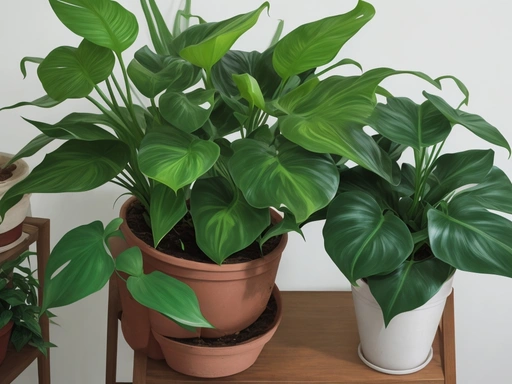Philodendron Yellow Leaves – Troubleshooting Guide
Key Takeaways:
- Philodendron yellow leaves may indicate overwatering or inadequate drainage.
- Direct sunlight can cause philodendron leaves to turn yellow.
- Fertilizer imbalance can lead to yellowing of philodendron leaves.
- Proper care, including watering, lighting, and fertilizing, can prevent philodendron leaves from turning yellow.
Have you noticed the vibrant leaves of your beloved Philodendron turning a worrisome shade of yellow? Don’t panic just yet! Those yellow leaves could be a sign of an underlying issue that needs your attention.
As a plant enthusiast, I’ve encountered this problem myself, and let me tell you, it’s a common one.
In this blog, we’ll explore the different causes of yellow leaves in Philodendrons, how to diagnose the problem, and most importantly, the treatments and solutions to bring your plant back to its lush and green glory. Stay tuned and let’s save those leaves together!
| Possible Cause | Solution |
| Too much sunlight | Move the plant to a spot with indirect sunlight |
| Too little sunlight | Place the plant in a location with brighter indirect light |
| Overwatering | Allow the top inch of soil to dry out before watering |
| Underwatering | Water the plant thoroughly, ensuring the water drains out of the bottom |
| Improper humidity | Increase humidity around the plant by misting or using a humidifier |
| Root rot | Inspect the roots for rot and consider repotting in fresh, well-draining soil |
| Nutritional deficiency | Fertilize the plant with a balanced, water-soluble fertilizer according to package instructions |
What Causes Yellow Leaves in Philodendrons?
Yellow leaves in Philodendrons can be caused by various factors. These include overwatering, underwatering, lack of sunlight, too much sunlight, nutrient deficiencies, pest infestations, or excessive temperatures.
Identifying and addressing the underlying cause is essential for restoring the health of your Philodendron.
Diagnosing the Problem: How to Identify Yellow Leaves
To diagnose the problem of yellow leaves on your Philodendron, examine the leaves closely.
Look for patterns, such as the entire plant having yellow leaves or only certain areas being affected.
Consider other factors like overwatering, lack of sunlight, or nutrient deficiencies.
Observation and analysis will help pinpoint the root cause.
Treatments and Solutions
Treatments and Solutions:
- Adjust watering: Overwatering can lead to yellow leaves, so make sure to let the soil dry out before watering again.
- Check lighting: Too much or too little light can cause yellowing. Find the right balance for your philodendron’s specific needs.
- Fertilize properly: Use a balanced houseplant fertilizer and follow the instructions to avoid nutrient deficiencies.
- Prune damaged leaves: Trim yellowing leaves to encourage new growth.
- Monitor humidity: Philodendrons prefer higher humidity levels. Consider using a humidifier or placing a tray of water near the plant.
- Managing pests: Check for signs of pests like spider mites or aphids. Use appropriate insecticides or natural remedies to eliminate them.

Preventing Yellow Leaves in Philodendrons
Preventing yellow leaves in Philodendrons is crucial for plant health.
Ensure proper watering, avoiding over or underwatering.
Place them in bright, indirect light.
Use well-draining soil and fertilize regularly.
Clean the leaves to avoid pests and maintain humidity levels.
Final Verdict
Yellow leaves in Philodendrons can be caused by several factors including lack of sunlight, overwatering, nutrient deficiency, pest infestation, and temperature stress. To diagnose the problem, visual inspection, soil moisture testing, and nutrient testing are recommended.
Treatments and solutions include adjusting light levels, watering routines, soil amendments, pest control, and temperature management.
Preventing yellow leaves in Philodendrons involves providing adequate sunlight, proper watering practices, nutrient-rich soil, regular inspections, and pest control. It is important to address the issue promptly to save the plant.
Remember, prevention is key to maintaining the health and vibrancy of your Philodendron.







